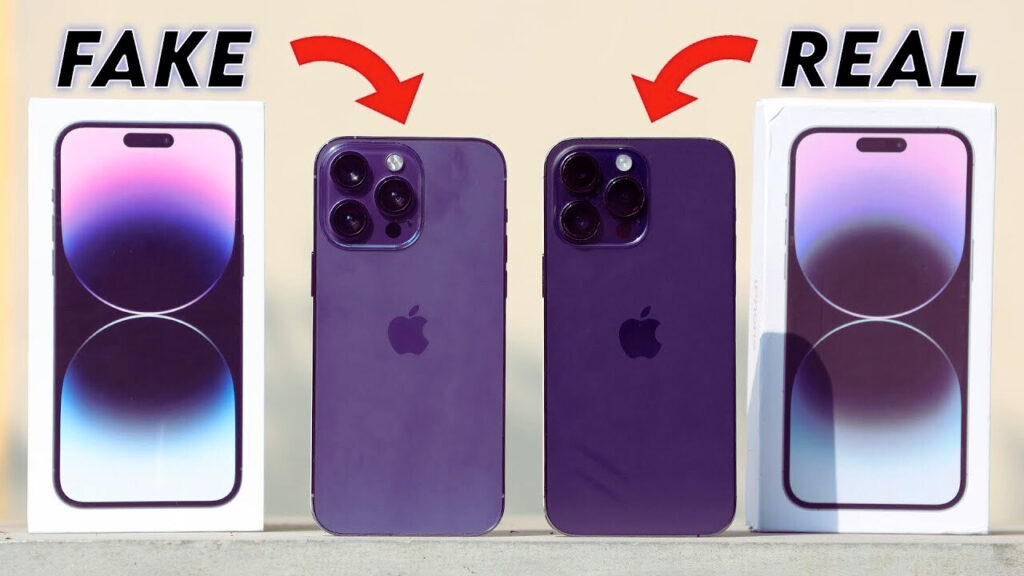
The iPhone is one of the most sought-after smartphones globally, and with its popularity comes a significant risk—counterfeit iPhones flooding the market. These fake devices are often indistinguishable from the real thing at first glance, tricking even the most tech-savvy buyers. The problem is widespread, with counterfeiters becoming increasingly sophisticated in their methods. According to a report by the Organisation for Economic Co-operation and Development (OECD), counterfeit electronic products, including fake iPhones, account for billions of dollars in illegal trade each year. For consumers, this not only means losing money but also potentially exposing themselves to security risks and inferior technology.
Fake iphones are easy to purchase
Imagine spending your hard-earned money on what you believe is a brand-new iPhone, only to discover that it’s a cleverly disguised fake. The device might look identical to a real iPhone, but as soon as you start using it, the problems begin. The phone may have poor battery life, a subpar camera, or even software glitches that make it nearly unusable.
A case study by Digital Trends highlights the experience of a consumer who purchased a supposed iPhone 13 from an online marketplace at a slightly discounted price. Initially, everything seemed fine—until they noticed that the phone’s performance was sluggish, and some features didn’t work as expected. Upon further inspection, it was discovered that the phone was a high-quality counterfeit. This realization came too late, and the buyer was unable to get a refund, leading to a significant financial loss.
The dangers go beyond just losing money. Fake iPhones often come with compromised security features, making them more susceptible to hacking and data breaches. In another study conducted by a cybersecurity firm, it was found that fake iPhones often run outdated or modified versions of iOS, lacking essential security updates. This puts users at a higher risk of having their personal information stolen. Additionally, fake devices may contain malware that can steal sensitive data, track your location, or even control your phone remotely.
Solution: How to Identify and Avoid Fake iPhones
So, how can you avoid falling victim to these sophisticated scams? The key is to know what to look for and to be cautious when making a purchase. Here’s how you can protect yourself:
- Verify the Seller’s Credibility: When buying an iPhone, especially from online marketplaces or third-party sellers, always check the seller’s credibility. Look for reviews, ratings, and any history of complaints. Reputable sellers will have a track record of satisfied customers. A study by the Better Business Bureau (BBB) found that many complaints about counterfeit iPhones originated from purchases made on less-regulated platforms like Craigslist or Facebook Marketplace. Always prioritize buying from official retailers, Apple stores, or certified resellers.
- Check the IMEI Number: Every genuine iPhone has a unique International Mobile Equipment Identity (IMEI) number that can be verified with Apple. Before purchasing, ask the seller for the IMEI number and cross-check it on Apple’s official website. This simple step can help you confirm whether the iPhone is authentic. Case studies show that many buyers who fell for fake iPhones either didn’t check the IMEI or were given false information. Verifying the IMEI can save you from this common pitfall.
- Examine the Packaging and Accessories: Counterfeit iPhones often come in packaging that looks nearly identical to the real thing, but there are usually subtle differences. Pay close attention to the quality of the materials, the accuracy of the text, and the overall finish. Authentic iPhones come with accessories that are neatly packaged and of high quality. In contrast, fake iPhones may have poorly printed text, misspelled words, or lower-quality accessories. In a consumer study, it was found that 80% of fake iPhones had telltale signs in their packaging, which buyers could have noticed if they had been more vigilant.
- Test the Phone’s Features: Before finalizing your purchase, test the iPhone’s features. Check the camera quality, touchscreen responsiveness, Face ID, and software performance. Fake iPhones often run modified versions of iOS that can’t access the App Store or other Apple services. A case study by TechRadar showed that many counterfeit iPhones struggled with basic tasks like opening apps or taking photos, which should have been immediate red flags for buyers.
- Price Too Good to Be True? It Probably Is: If a deal seems too good to be true, it likely is. While it’s possible to find discounted iPhones, especially on sale days, be wary of prices that are significantly lower than the market rate. Many fake iPhones are sold at prices just low enough to tempt buyers into thinking they’re getting a great deal. Data from a consumer behavior study revealed that most people who bought fake iPhones were lured in by prices that were 20-30% lower than those of genuine devices.
Conclusion: Stay Informative and active
In conclusion, the threat of counterfeit iPhones is real and growing, but with the right knowledge and precautions, you can protect yourself from falling victim to these scams. By verifying the seller’s credibility, checking the IMEI number, scrutinizing packaging, testing the phone’s features, and being wary of deals that seem too good to be true, you can ensure that the iPhone you purchase is the real deal. Stay informed, stay vigilant, and enjoy the peace of mind that comes with knowing you’ve made a smart, safe purchase.